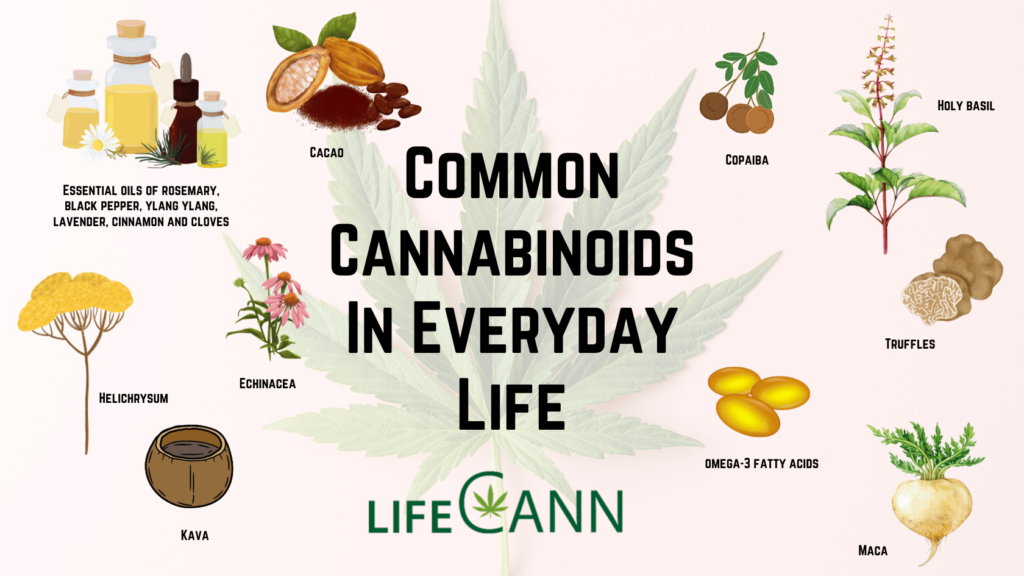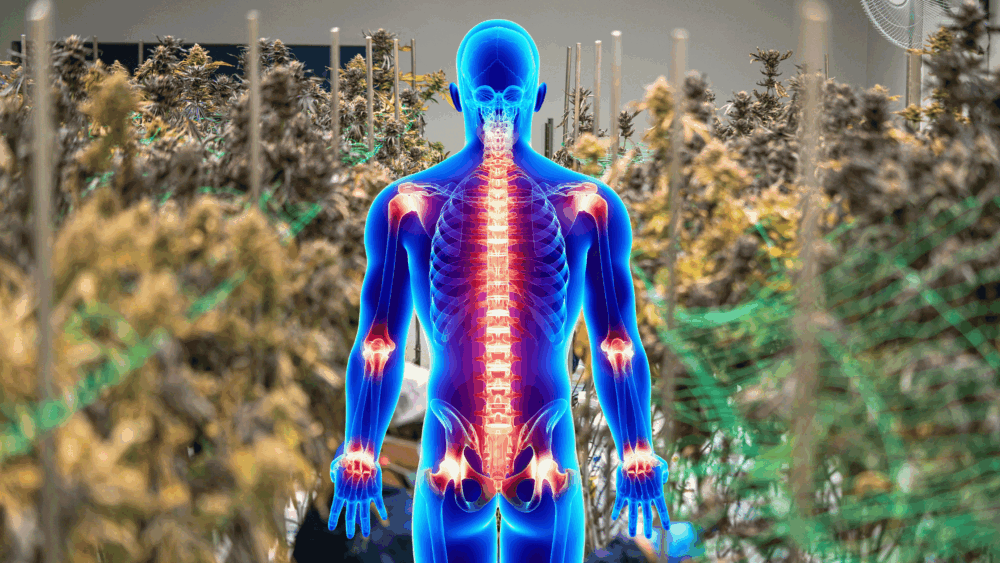
Prevailing thought associates Cannabinoids with the Cannabis plant. However, the human body contains many cannabinoid receptors that are regularly activated by cannabinoids that are found in everyday common products and foods.
Research has shown that many common foods, plants, and herbs contain molecules that are cannabinoid-like in function. Though only the cannabis plant produces THC, this research suggests that common foods and herbs may have a somewhat similar effect on the human endocannabinoid system.
Though the chemicals may not be exactly the same as those in pure cannabis, they seem to deliver positive effects to the endocannabinoid system (ECS). The ECS is the network of cannabinoid receptors already present in humans and animals. This system has different functions such as sleep regulation, appetite, immune function, mood, and pain.
Examples of common cannabinoids include sweet potatoes which actually have the reputation as a mood enhancer. The complex carbs and vitamin B which are abundant in sweet potatoes produce serotonin, the pleasure chemical in the brain. Sativas also benefit those who suffer from low mood or due to its elevating properties. Sweet potatoes can work along with the sativa strain of marijuana to elevate spirit and mood.
Vegetables such as broccoli, cabbage, kale, brussels sprouts, and cauliflower contain what has been shown to be an anti-cancer dietary molecule that is also found in cannabis. The CB2 receptor agonist works to activate anti-inflammatory effects.
High sources of omega-3 fatty acids which can be found in nuts, quinoa and avocados and salmon are believed to bind to cannabinoids.
We know some marijuana strains have a peppery taste and aroma.They contain high levels of the terpene beta-caryophyllene (BCP). This is also found in Black Pepper. BCP functions similarly to a cannabinoid and has a binding affinity with CB2, Some cannabis cultivars with a peppery flavor and scent including Hash. BCP is also present in Rosemary and some scientists now refer to BCP as dietary marijuana. The terpene is thought to help with pain relief and addiction when paired with THC and/or CBD. Other spices with BCP include Cinnamon, Clove, and Oregano.
Other herbs contain terpenes, such as pinene and limonene, which is also present in marijuana. Pinene is a compound in sage and thyme. Pinene is known for widening the passages in the lungs. Limonene can be found in lemon basil, lemongrass and lemon thyme. This terpene can reduce tension, depression, and anxiety.
Flax seeds and the flax plant are similar to cannabinoids and both CBD and flax have anti-inflammatory effects that aid in producing an autoimmune reaction.
Black truffles contain an endocannabinoid that is naturally produced in the brain called Anandamide (AEA). This can work to control mood, memory, pain and appetite. AEA,, is the “animal version” of THC and is usually made by animals and binds to CB, imitating the action of cannabinoids. Some refer to AEA as the “bliss molecule.”
AEA is also present in Echinacea, a natural and abundant herb that is also a significant CB2 agonist. Echinacea is believed to ward off colds and help with various respiratory illnesses. Along with AEA, the endocannabinoids alkylamides are found in echinacea. Like THC, it is supposed to inhibit inflammation.
Turmeric is known as a potent anti-inflammatory, but it is also often praised for its benefit. However, research has shown that breast cancer treatments based on these cannabinoids, demonstrate a regulator of tumor cell pharmacy interaction.
Most pleasing is chocolate. The endocannabinoid system is influenced by substances found in chocolate that interact with a particular bodily enzyme known as FAAH. This increases levels of the body’s endogenous endocannabinoids in the bloodstream. FAAH is responsible for the breakdown of AEA in the body. Cacao contains an AEA reuptake inhibitor, so that cocoa boosts AEA in the body by decreasing FAAH. This results in positive moods and a relaxed feeling.
As a certified cannabis doctor, Dr. Fernando Fandiño-Sende is uniquely qualified to make professional recommendations enabling the receipt of a Medical Marijuana card from the state of Florida. In three easy steps, Florida patients can obtain their Medical Marijuana cards from LifeCannMD and Dr. Fernando Fandino-Sende.
Once a patient has contacted LifeCann at (833) 543-3226 or online at www.lifecannmd.com, the team will listen to the patient’s circumstance during the initial no-risk, no-commitment medical marijuana consultation. If the individual is recognized as a qualifying candidate due to their condition, the next step is getting the Dr. Sende’s official medical recommendation. Upon approval you are free to visit one of the many medical marijuana dispensaries in Miami.
Offering superior and professional customer service, Florida’s top-rated medical marijuana referral clinic has served over 5,000 satisfied patients. Their caring expertise and knowledgeable recommendations have helped a number of patients.
For more information, please visit www.lifecannmd.com, email monika@lifecannmd.com or call (833) 543-3226.


